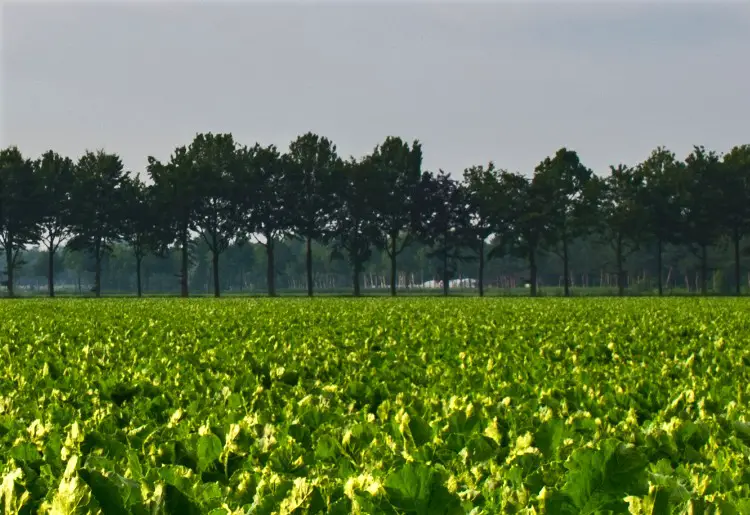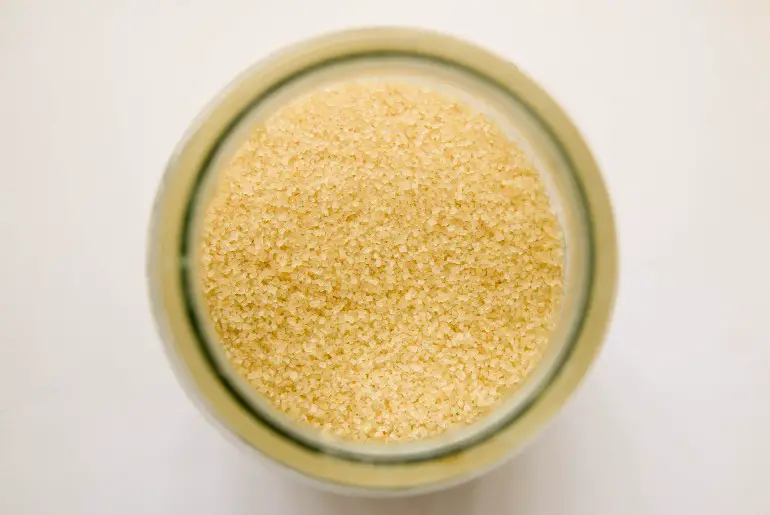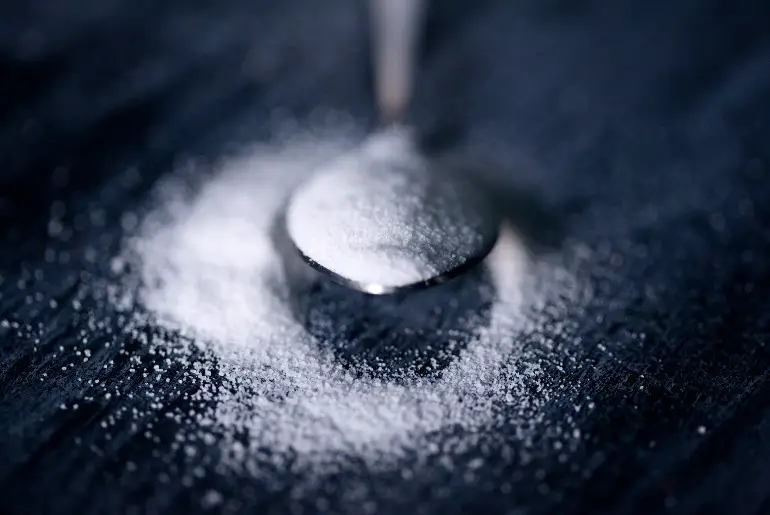Granulated sugar (AKA white sugar or table sugar) is the most common sweetener in foods and beverages. I will refer to it as just “sugar” to make things a little easier to read throughout this article. Sugar is a key ingredient for sweet treats and desserts but is also found in many other types of foods. Sugar not only provides sweetness but also acts as a preservative, adds texture to foods, and gives color and flavor when cooked.
Sugar comes from either sugarcane or sugar beets. Sugarcane and sugar beets contain a carbohydrate called sucrose which is removed, purified, and crystallized. Sugar is 99.5% crystallized sucrose and 0.05% water and impurities.

Sugar Beets
Sugar beets are grown from seeds. They are grown as a summer crop in cooler areas or as a winter crop in warmer regions. They are similar in shape to red garden beets. However, they are quite large, 2-4 pounds when mature, and have shiny, white roots. Sugar beets contain 13-22% sucrose. They take 90 to 95 days to mature.
Sugar beets are usually harvested by machine. The first machine removes the leaves and slices off the top of the sugar beet roots. The slice removed is the growth point of the beet which has high levels of impurities. This would affect the factory’s ability to extract the sugar from the root. Another machine then pinches the root and pulls it from the soil.

Sugarcane
Sugarcane is actually a type of grass and is mostly grown by planting cuttings from immature cane. It is grown in tropical and subtropical areas. Sugarcane grows 10 to 24 feet tall and has long sword-shaped leaves. Sugarcane contains 15-23% sucrose. It takes about 1 year to mature.
Sugarcane is harvested by machine and by hand. The cane is cut, and the leaves and undergrowth are stripped off. The stalks are then cut into smaller pieces. These small pieces of cane are then transported to a sugar mill.
Sugar Refining Process
Sugar Refining: Sugarcane vs Sugar Beets
The initial steps in the process are slightly different between sugar beets and sugarcane. Sugarbeets are cleaned of dirt, debris, and rocks. They are then cut into small strips and soaked in hot water to get a sugary juice. The leftover pulp is then used for cattle feed.
When sugarcane gets to the mill, the stalks are washed then cut into shreds. Large rollers then crush the shreds to press the juice out. Sometimes cane sugar is processed using bone char. While bone char does not remain in the sugar after processing, it is worth considering that it may have been used in processing your sugar if you are vegetarian or vegan.
Sugar Refining: Next Steps
Once there is raw juice from either sugar beets or sugarcane, the next steps of the process are essentially the same. The raw juice is purified and filtered. A small amount of sugar crystals is injected, and sugar crystals begin to grow. When crystals are at the right size, they are then spun to remove the remaining liquid. Now, you are then left with golden raw sugar that is 96-98% sucrose.
This sugar is then further refined, and filtered and additional color and impurities removed. Once this process is complete, it can be packaged and shipped. Granulated sugar can also be pressed into cubes or ground to make powdered sugar. If you want to watch this process, check out this video from Discovery UK.

Is Sugar from Sugarcane vs Sugar Beets Different?
In theory, sugar is essentially the same regardless of source. Sugar does not always specify its source. In the United States, it can legally be called sugar as long as it has come from either sugarcane or sugar beets. It may even be a blend of the two. Sugar is 99.5% crystallized sucrose and 0.05% water and impurities. Some say that cane sugar caramelizes better, tastes better, and is easier to work with. In contrast, beet sugar supposedly burns quicker, has a less pleasant taste, and is harder to work with. However, for most people, it is unlikely that you can tell the difference between the two.
How is Molasses Made?
Molasses is actually a by-product created during sugar processing. Typically it is from sugarcane. When the sugar is being boiled and refined, the crystallized sugar is removed from the liquid. The remaining liquid then goes through several boiling processes, which results in molasses.
Turbinado and Muscavodo Sugar
As mentioned above, sugarcane juice is boiled in evaporators to form crystals. It is then spun to remove the liquid molasses. What is left is golden, “raw” sugar, also called turbinado sugar. It is sugar before the further refining, where color and basically all molasses is removed. Muscovado sugar is similar but has had even less molasses removed, making it darker and stickier than turbinado sugar.
Brown Sugar
Brown sugar is white sugar with molasses added back in. Dark brown sugar has more molasses (about 6.5%) than light brown sugar (about 3.5%). Compared to turbinado or muscovado sugar, brown sugar has molasses added back in a specific amount. For more info on brown sugar, check out this article.
How to Store Sugar
Sugar should be stored in an airtight container in a cool, dry place such as a pantry. How long does white sugar last? Because of its low water content, sugar should last indefinitely. However, it is best used within two years.
So there you go! Now you know a little bit more about how sugar is made! If you’re in the mood to use some of that sugar in your pantry, check out a couple of my awesome recipes. I recommend my Fresh Pineapple Ice Cream or Key Lime Bars.





